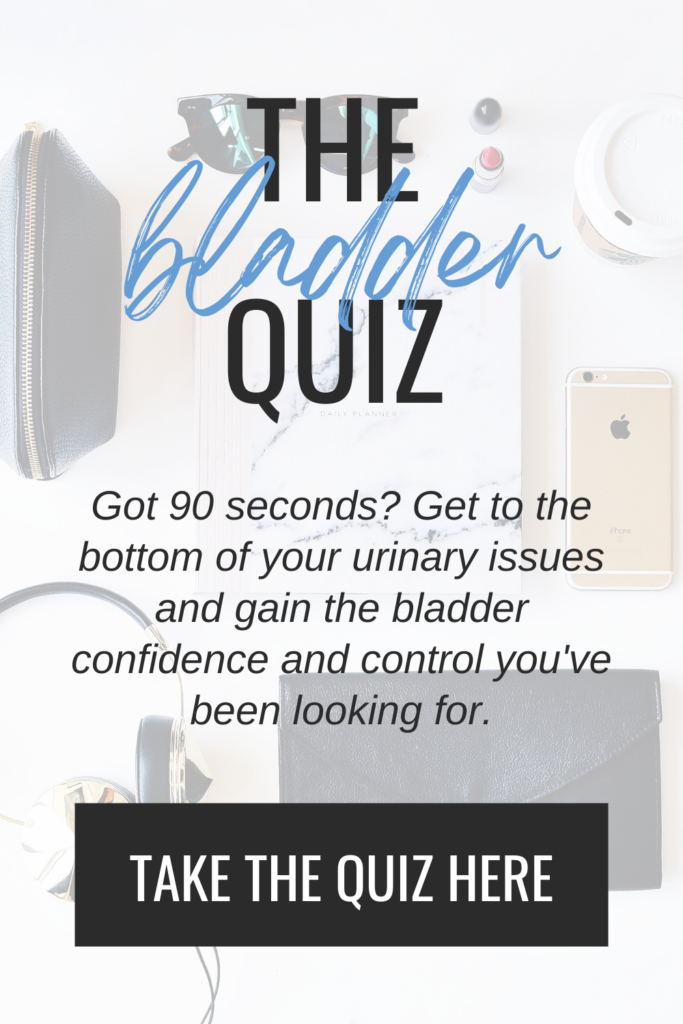One of my favorite things about addressing pelvic health is that it rarely requires fancy gadgets or expensive equipment to get results. 99.99999% of the time, all you need is a little guidance, bit of mindfulness, and an ounce (or two) of patience to see improvement in bladder, bowel, sexual, and musculoskeletal issues. But as the saying goes, there’s an exception to every rule, and vaginal dilators are that exception in the world of pelvic health.
If you’ve never heard of a vaginal dilator before…keep reading. While it can be intimidating at first, using a dilator is easy once you know the who, what, where, when, why, and how of these oh-so-effective tools. While not every woman needs a vaginal dilator for optimal pelvic health, each and every woman should know the option is there if needed, and be confident in the ability to help herself.
WHAT IS A VAGINAL DILATOR
A vaginal dilator is not a dildo. I repeat…not a dildo (although it looks a lot like one and teeeeechnically could be used as one). A cylindrical or tube shaped medical device, dilators come in multiple sizes, occasionally with a handle, and are often made out of plastic or silicone. All vaginal dilators are meant to be inserted into…you guessed it…the vagina, and are intended for therapeutic purposes only.
As someone who’s both used a dilator (more on that later) and recommends them on the weekly as a pelvic rehab therapist, I’ve seen and tried multiple styles and brands. If after reading this post you think a dilator might be right for you, these are the few I recommend –
- For quality + comfort: Intimate Rose has the best dilators on the market, hands down. Made by a pelvic rehab therapist, these give the perfect amount of stability, have the softest, BPA-free silicone, and come in every size you could possibly need. This is the brand I used during my postpartum recovery and you can get $5 off your purchase at Intimate Rose with code AMANDA53.
- The best bang for your buck: This dilator set is made out of plastic and comes with a handle and five different sized, interchangeable dilators. At $38, it’s basically five for the price of one with a quality you can definitely see results with.
- DIY: To be honest, you can use just about anything that’s somewhat cylindrical-shaped for a homemade dilator as long as it’s not sharp and you have a way to keep it sanitary. The butt end of a sharpie, kitchen utensil, or even a candle could be used as a dilator as long as you cover it with a condom or rubber glove.
While just using your finger might be tempting, I strongly recommend against it. Not only will your finger provide limited results, but it will get tired quickly as dilators are meant to be used for 10-15 minutes at a time. As a gal who’s always looking for a bargain, I get that spending money on a dilator may not be your top priority, but I can tell you from experience that it’s well worth the investment.
REASONS TO USE A VAGINAL DILATOR
Dilators are inserted into the vaginal canal to help gently and progressively stretch the tissues of the opening (introitus) and/or the deeper muscles of the pelvic floor. If these structures are tight, painful, or not moving well for whatever reason, they can cause pelvic pain, pain with intercourse, bowel and bladder dysfunction, and even difficulty with pregnancy and vaginal deliveries.
When birthing Lolo, I had a third degree vaginal tear and muuuuultiple stitches. This caused tension in my pelvic floor and secondary discomfort and difficulty with vaginal insertion, constipation and hemorrhoids, and general pelvic pain with everyday activities. But with some pelvic floor relaxation strategies (click here to get this must-have guide to pelvic floor healing) and a few weeks of dilator use, everything returned back to normal.
RELATED POST: A Pelvic Floor PT’s Postpartum Story – Leakage, Prolapse + Tearing
RELATED POST: My Daily Pelvic Floor Relaxation Routine + Why You Might Want to Try It Too
Believe it or not, pelvic floor tension is so common (like…far more common than general weakness) because it can be caused by so many things – chronic pain, stress, pregnancy, vaginal tearing, C-Sections and other abdominal surgeries, endometriosis, PCOS, fibroids, radiation therapy, menopause and vaginal atrophy, physical or sexual abuse, poor posture, breathing incorrectly, back and hip issues, even flat feet (!!!) – and it needs to be addressed if optimal pelvic health is what you’re after.
Using a dilator takes a bit of effort and planning, but it’s worth your time if anything here is resonating with you. If you have pelvic floor pain or tightness and have tried ~everything~ with no improvement or just want to make sure you’re covering all your bases, a dilator is going to be your next best step.
HOW TO USE A VAGINAL DILATOR
Many women understand the concept of a vaginal dilator and why they’d need to use one, but it’s the “how” that stops most in their tracks, prevents them from taking action, and ultimately limits improvement in their symptoms. No judgement here…despite knowing the in’s and out’s of dilators, I too avoided using one because it seemed inconvenient, messy, embarrassing, and time consuming (plus at least ten other excuses I’m sure I could conjure). But the drastic improvement I saw once I broke down and did the dang thing is why I’m so passionate about this topic, and I want you to see the same results.
~DILATOR HOW-TO~
1. Make sure your dilator is clean by washing it with warm water and an all-natural soap.
2. Start in a semi-reclined position with your back and head supported, knees bent, and feet planted; anywhere that’s comfortable, quiet, and calming.
3. Add lubricant as needed to your vaginal opening as well as the top of the dilator. The use of water-based lubricant is important if you’re using a silicone dilator.
4. Perform a kegel (or pelvic floor contraction) to find and engage your pelvic floor muscles, then relax to release any pelvic muscle tension.
5. Gently and slowly insert the dilator into the vaginal canal, directing it slightly downward. ONLY INSERT WHAT YOU CAN TOLERATE.
6. You can either hold the dilator in the center for a period of time or gradually push into the vaginal walls to hold a stretch where you feel you need it most or in the areas of pain and tension. Hold up to two minutes at each position. DO NOT PRESS DIRECTLY UPWARDS ON THE URETHRA.
7. Make sure you breathe and continue to focus on pelvic floor relaxation as you hold the dilator in place.
8. Try keeping pain to minimum. If it becomes too painful, consider taking a break for a few minutes or going down a dilator size.
9. This process typically takes about 10-15 minutes from start to finish. Perform three to five times per week; every other day is the sweet spot that worked for me.
10. If you have a dilator set, slowly work up in size as this practice becomes more comfortable over the days and weeks.
11. You can also progress in the position that you use your dilator such as lying on your side, hands and knees, or during a deep squat.
I personally found the most success performing vaginal wall stretching right before intercourse. Some prefer to do their dilator exercises right after taking a bath or shower because the tissues are soft, warm, and relaxed. There’s overall no wrong time to use a dilator (please don’t put this broad statement to the test), it’s consistency that’s key.
WHICH SIZE(S) YOU SHOULD GET
Dilators come in multiple sizes, so it can be confusing to know which one(s) to get. Dilators can be purchased either as a set or in a single size, and I’ve seen both work for most. If possible, you may want to consult a pelvic rehab therapist first, and most important of all…listen to your body.
Here are a few tips to go by –
- If you have severe vaginal pain or are nervous about vaginal penetration and/or using a dilator, a set can be helpful so you can slowly progress the intensity of vaginal insertion.
- If using a dilator set, make sure the largest size is equivalent to your insertion goal and smallest size is what you feel you can easily tolerate with vaginal insertion.
- If you have pain at one very specific spot, (like the perineum after tearing with child birth) one dilator is often enough. Choose a size that’s slightly smaller or equal in circumference to your goal.
All of the dilators mentioned above come with a great return policy, which you can and should take advantage of if the size(s) you end up purchasing aren’t right for you.
The thought of using a vaginal dilator may make you blush, roll your eyes, gag, or a combo of all of the above, but once you actually use one and see the benefits, I can almost guarantee all reservations will be out the window. Pelvic floor issues rarely get better over night, but they do improve faster when you’re doing all the right things and have all the right tools, and I’d love nothing more than for you to get the results you’re looking for.
Ok…I thiiiiiiiink that covers it all, so now I need your help. My goal is to make this a one-stop-shop resource for all things dilators, so if you have a question I didn’t answer or know of any other tips I missed, please utilize the comments section below.
Fear of the taboo and avoidance of TMI is what keeps us from having [these] kinds of conversations, but none of that is getting in our way here. Pelvic pain and dysfunction aren’t normal and women’s health (in every sense of the word) is a cause worth prioritizing. You can always count on me to help guide you to your goals, one uncomfortable but oh-so-important discussion at a time.
-Amanda
Disclaimer: The content provided here does not constitute medical advice, nor is it a substitute for personalized healthcare. If you have concerns about a medical condition, diagnosis, or treatment, you should consult with a licensed healthcare professional.
Disclosure: Some of the links above are affiliate links, meaning, at no additional cost to you, I will earn a commission if you click through and make a purchase. No pressure, but I have a feeling you’re gonna like what I’ve taken the time to put my recommendation behind.



















